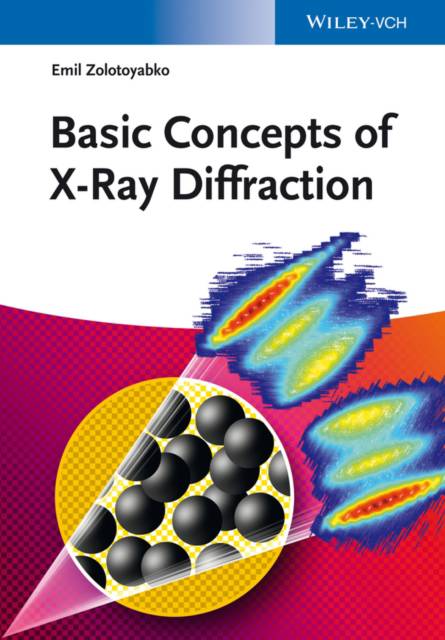
- Afhalen na 1 uur in een winkel met voorraad
- Gratis thuislevering in België vanaf € 30
- Ruim aanbod met 7 miljoen producten
- Afhalen na 1 uur in een winkel met voorraad
- Gratis thuislevering in België vanaf € 30
- Ruim aanbod met 7 miljoen producten
Zoeken
Omschrijving
Authored by a university professor deeply involved in X-ray diffraction-related research, this textbook is based on his lectures given to graduate students for more than 20 years. It adopts a well-balanced approach, describing basic concepts and experimental techniques, which make X-ray diffraction an unsurpassed method for studying the structure of materials.
Both dynamical and kinematic X-ray diffraction is considered from a unified viewpoint, in which the dynamical diffraction in single-scattering approximation serves as a bridge between these two parts. The text emphasizes the fundamental laws that govern the interaction of X-rays with matter, but also covers in detail classical and modern applications, e.g., line broadening, texture and strain/stress analyses, X-ray mapping in reciprocal space, high-resolution X-ray diffraction in the spatial and wave vector domains, X-ray focusing, inelastic and time-resolved X-ray scattering. This unique scope, in combination with otherwise hard-to-find information on analytic expressions for simulating X-ray diffraction profiles in thin-film heterostructures, X-ray interaction with phonons, coherent scattering of Mössbauer radiation, and energy-variable X-ray diffraction, makes the book indispensable for any serious user of X-ray diffraction techniques.
Compact and self-contained, this textbook is suitable for students taking X-ray diffraction courses towards specialization in materials science, physics, chemistry, or biology. Numerous clear-cut illustrations, an easy-to-read style of writing, as well as rather short, easily digestible chapters all facilitate comprehension.
Both dynamical and kinematic X-ray diffraction is considered from a unified viewpoint, in which the dynamical diffraction in single-scattering approximation serves as a bridge between these two parts. The text emphasizes the fundamental laws that govern the interaction of X-rays with matter, but also covers in detail classical and modern applications, e.g., line broadening, texture and strain/stress analyses, X-ray mapping in reciprocal space, high-resolution X-ray diffraction in the spatial and wave vector domains, X-ray focusing, inelastic and time-resolved X-ray scattering. This unique scope, in combination with otherwise hard-to-find information on analytic expressions for simulating X-ray diffraction profiles in thin-film heterostructures, X-ray interaction with phonons, coherent scattering of Mössbauer radiation, and energy-variable X-ray diffraction, makes the book indispensable for any serious user of X-ray diffraction techniques.
Compact and self-contained, this textbook is suitable for students taking X-ray diffraction courses towards specialization in materials science, physics, chemistry, or biology. Numerous clear-cut illustrations, an easy-to-read style of writing, as well as rather short, easily digestible chapters all facilitate comprehension.
Specificaties
Betrokkenen
- Auteur(s):
- Uitgeverij:
Inhoud
- Aantal bladzijden:
- 312
- Taal:
- Engels
Eigenschappen
- Productcode (EAN):
- 9783527335619
- Verschijningsdatum:
- 21/04/2014
- Uitvoering:
- Paperback
- Formaat:
- Trade paperback (VS)
- Afmetingen:
- 170 mm x 241 mm
- Gewicht:
- 680 g

Alleen bij Standaard Boekhandel
+ 291 punten op je klantenkaart van Standaard Boekhandel
Beoordelingen
We publiceren alleen reviews die voldoen aan de voorwaarden voor reviews. Bekijk onze voorwaarden voor reviews.








